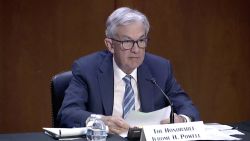A leading inflation indicator surgedin June, showing that prices continue to remain stubbornly high.
The Producer Price Index, a measure of the change in prices paid to US producers of goods and services, hit 11.3%in June compared to the same period a year agoand jumped 1.1% from May, according to data released Thursday by the Bureau of Labor Statistics.
That year-over-yearreading is up fromMay’s level of 10.9% and higher than economists’ expectations of 10.7% for June. Record-high energy and gasoline prices contributed to the increase, according to the BLS.
Stripping out the more volatile components of food and energy, core PPI increased 0.5% from May and is up by 8.3% for the 12 months ending in June.
Because it captures price changes happening further upstream, the PPI is sometimes considered a leading indicator for broader inflationary trends.
The report comes a day after the Consumer Price Index, which tracks how much consumers pay for a bundle of goods and services, showed that price increases in June climbed 9.1% year-over-year, setting a new 40-year high. Record-high gas prices drove much of that increase.
“The PPI number reinforces what we saw out of the CPI release yesterday, that energy costs not only pushed up gasoline prices for consumers but energy costs for producers as well,” said Kurt Rankin, vice president and senior economist for PNC.The higher prices producers are experiencing will eventually be passed along to consumers in the months ahead, he said.
But there are some encouraging signs from Thursday’s data, Rankin said.
Producer-level food prices have shown continued slowing over the past several months, he said, noting the month-over-month gain has declined sharply from 2.4% in March to 0.1% in June. Additionally, transportation and warehousing costs have eased significantly to 0.8% in June from a 2.7% monthly gain in May.
The Federal Reserve has signaled it will take an aggressive approach to reining in inflation by raising interest rates.
“I don’t think the data we’ve seen today and yesterday really change that messaging,” said Stephen Juneau, senior US economist with Bank of America Global Research.
Both Bank of America and PNC expect the Fed to increase rates by another 75 basis points when officials convene for their next policymaking meeting at the end of the month. Such an increase would match the 75 basis-point hike the Fed made to its benchmark rate last month – the highest increase since 1994.
However, some analysts are even pricing in a rate hike of 100 basis points. That would mark the first time in the modern era that the economy could experience an increase of that magnitude.






















